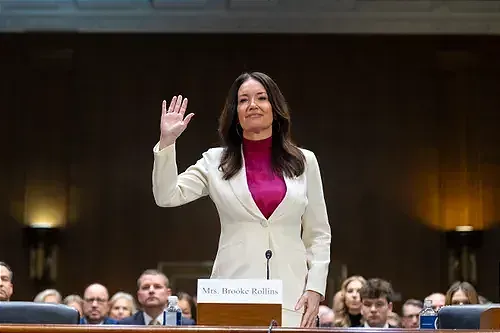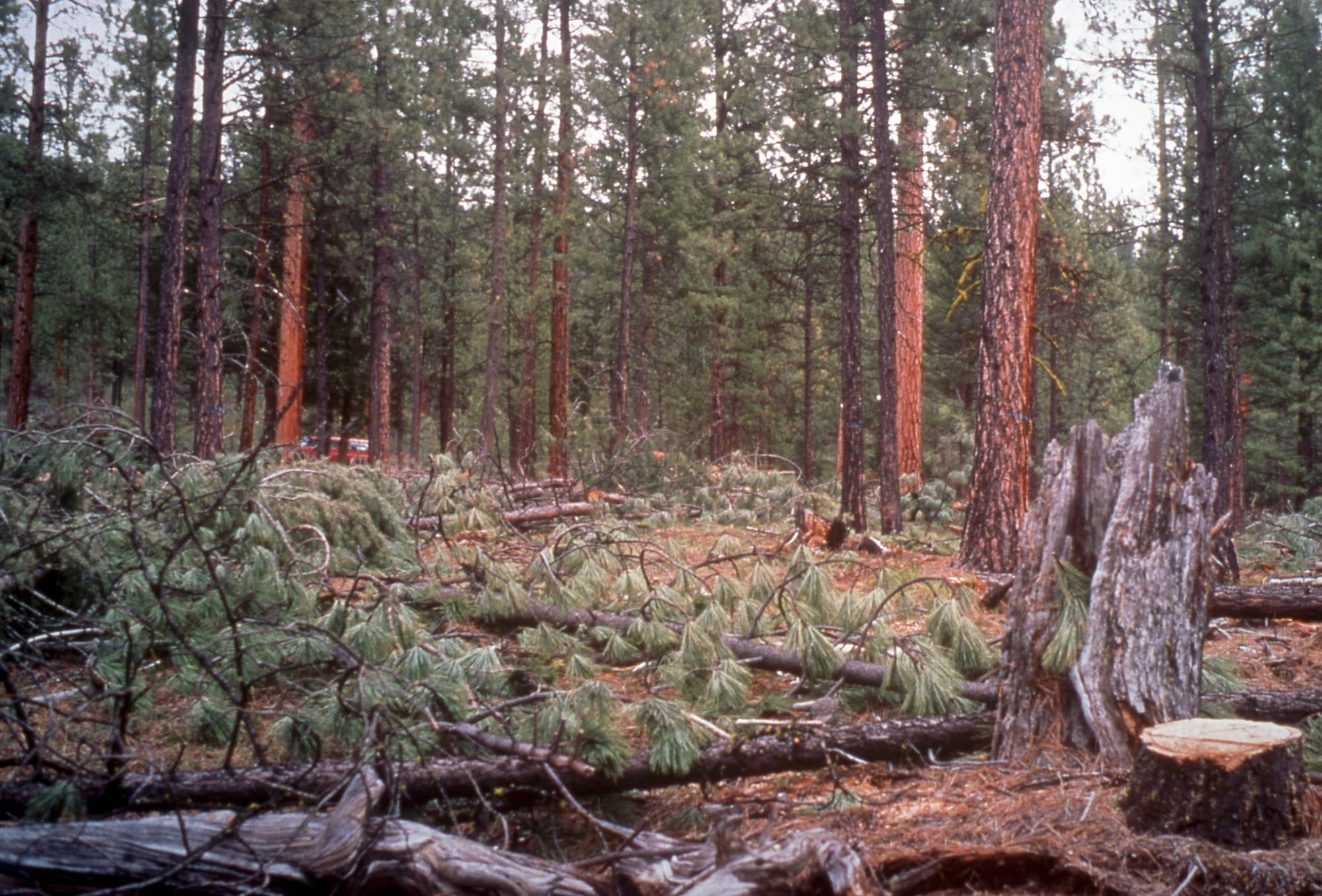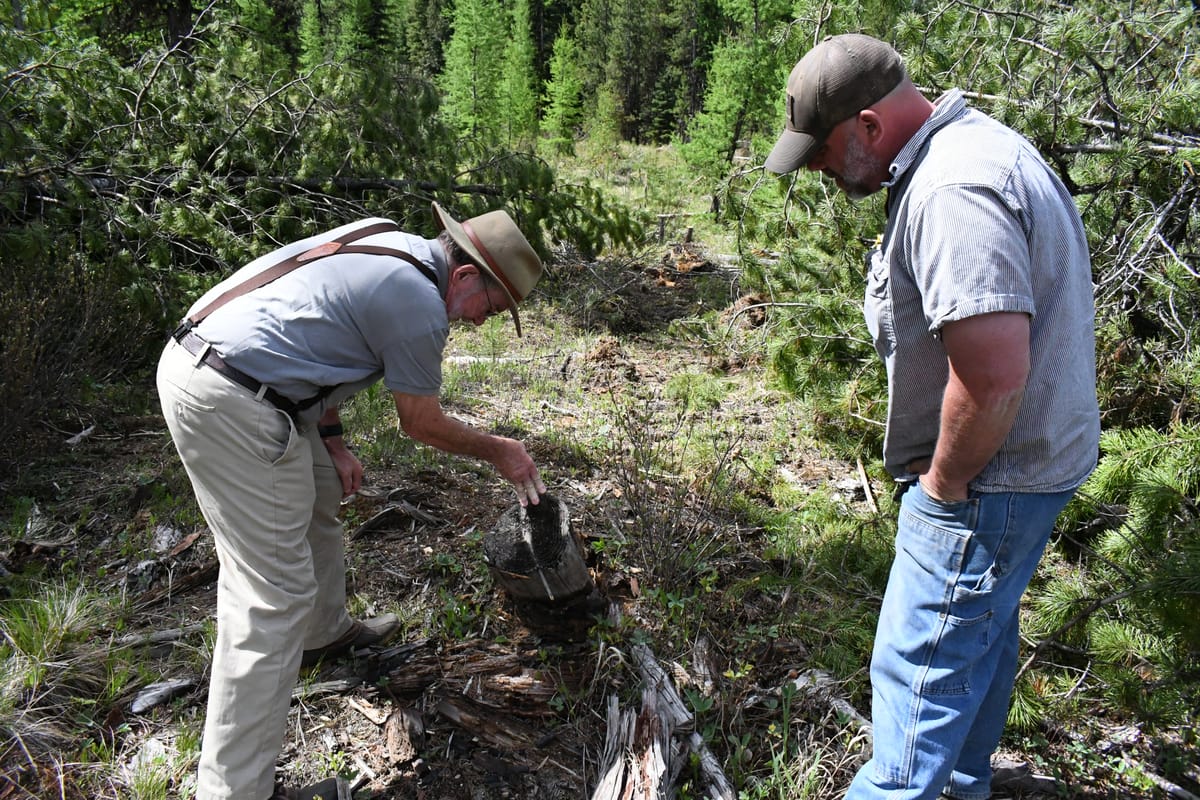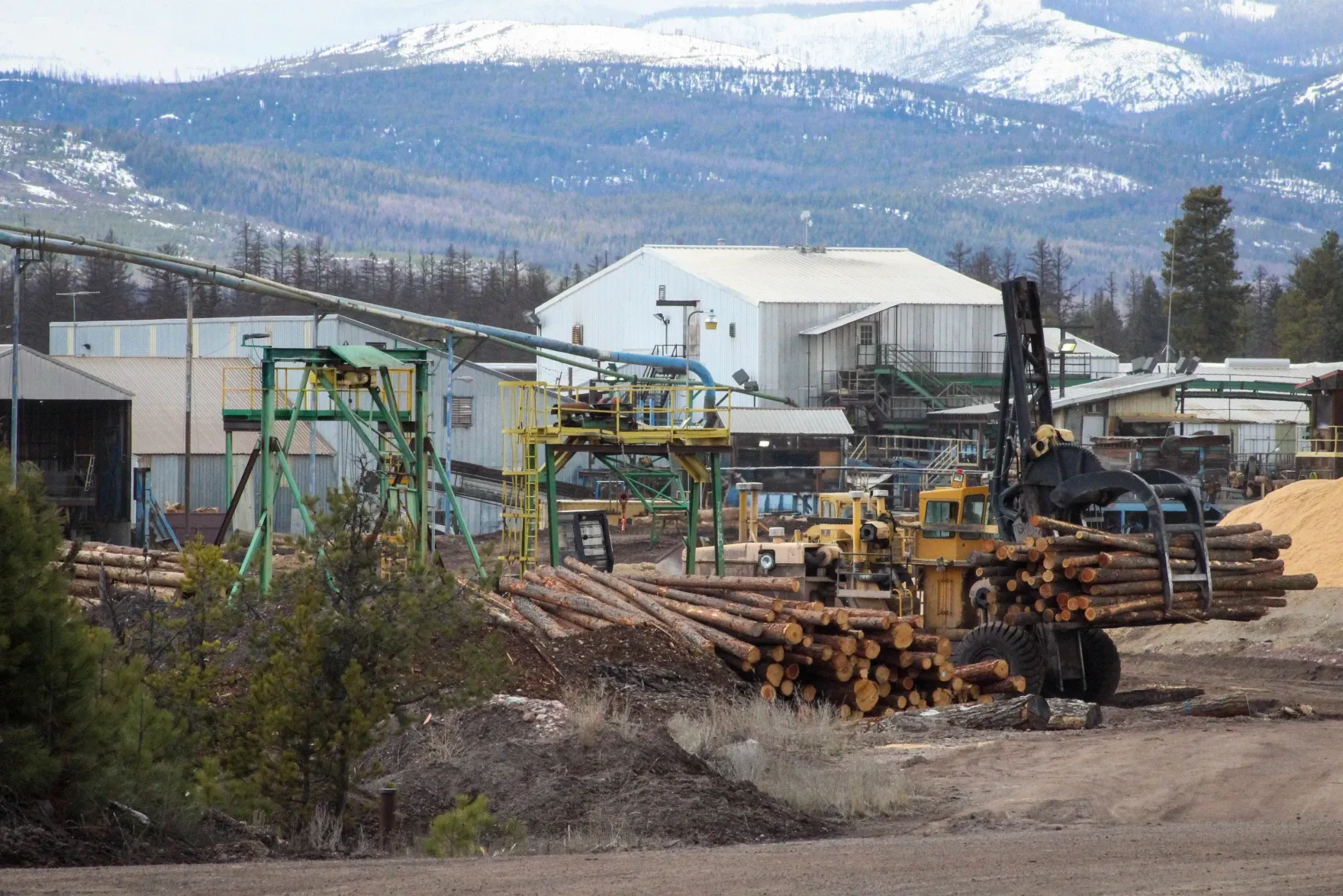Legacy - The Third Strand of The Braid
This is a repost of the second half of Braided Stewardship: Science, Responsibility, and Legacy. In hindsight, if I had

If you’re not a subscriber, please consider subscribing! We’re committed to public education and use our paywall sparingly - so we rely on your support to continue our work.
If you’re already a subscriber, thank you! Your support provides the consistent funding that allows us to keep delivering the quality content you expect from Evergreen.
Editor's Note: This is the text of Jim Petersen's March 24 keynote speech at the Idaho Forest Owner's Conference in Moscow, Idaho. Photos, video, PDF files, and Evergreen articles are related to topics referenced in his address.
On February 11, I started thinking about what I would say this morning.
Much has happened since then.
Most recently our good friend, Tom Schultz, was named Chief of the Forest Service within hours of Randy Moore’s retirement.
I suspect Tom is up to his eyeballs in his first major task: reviewing Forest Service NEPA policies that are tied to Council of Environmental Quality regulations.
These revisions come in the wake of last June’s Supreme Court ruling in Chevron Deference.
They are so important that I want to explain them - and Chevron Deference – before we dive into Tom Schultz’s appointment and what I see in our shared future.
CEQ coordinates federal environmental efforts, advises the President on environmental policy and oversees regulatory compliance with the National Environmental Policy Act – as it has done since NEPA became law in 1970.
In its 2024 Chevron Deference ruling, the Supreme Court stripped all federal agencies – including CEQ - of their power to interpret the regulations they administer. The Justices said the power to interpret rests in federal courts, not federal agencies.
This means that no corner of your life – not even your health care costs are immune – and certainly not constant rewrites of NEPA rules that have crawled into every corner of your forestry businesses, including WOTUS and its ephemeral streams and rainwater puddles.
Given Chevron, Tom Schultz hit the ground running following his appointment. So did his boss, Ag Secretary, Brooke Rollins.
Chief Schultz is a big picture thinker, but he is going to need our help. Forestry’s adversaries will do everything in their power to disrupt his efforts to restructure the Forest Service.
Schultz and his leadership team met a March 13 deadline to respond to a seven-page Trump Administration letter requesting detailed Phase 1 information about how they intend to reorganize the Forest Service.
Their more detailed Phase 2 responses are due April 14.
Phases I and 2 are where the rubber meets the road. The Office of Management and Budget and the Office of Personnel Management have given Chief Schultz, Secretary Rollins and their leadership teams the opportunity to erase everything on the blackboard and start anew. Nothing like this has happened since the Forest Service’s founding in 1905.
Welcome to the Trump Bullet Train where things change daily, sometimes hourly. The President is a master at controlling news cycles.
Perhaps you noticed that world leaders started meeting with Trump as though he was already President following last August’s assassination attempt – more than two months before he was elected.
Even Super Bowl advertisers worried about Trump's reaction to their commercials. No wonder the Budweiser Clydesdales won the USA TODAY ad meter contest. Or that the Lays Potato Chips commercial came in second. It featured a farm girl growing her own potato from a potato eye.
Advertisers sense that millions of Americans are tired of being hustled by bullshit artists.
There is a fresh clean breeze blowing in our nation’s capital. The forestry issues that bring us here this morning are going to get far more favorable treatment from the Trump Administration than they did from the Biden or Obama Administrations.
The Supreme Court’s conservative majority saved you and your business in a 6-2 majority ruling in Chevron Deference. There isn’t time for me to explain the origins of the ruling, but I explain it in an essay posted on our Evergreen website. It is titled “Tom Schultz and the CEQ Ruling.”
With all the daily chaos we are witnessing it’s hard to keep track of what’s happening in Congress and the Oval Office.
Elon Musk’s temporary Department of Government Efficiency is the engine powering the Trump Bullet Train. The goal is to eliminate billions of dollars in government waste. It’s an admirable goal, but I wish DOGE was using a scalpel, not an ax.
To understand what has happened to the Forest Service over the last 30 years, review the Workforce Assessment that The National Association of Forest Service Retirees delivered to Ag Secretary Sonny Perdue in 2019.
It tracks the decline in boots-on-the-ground talent in the Forest Service from 1992 to 2018:
· Forest engineers: 761 vs 1,556 in 1992
· Engineering techs: 521 vs 1,905 in 1992
· Foresters: 1,337 vs 5,143 in 1992
· Wildlife biologists: 568 vs 930 in 1992
· Fisheries biologists: 272 vs 371 in 1992
In those 26 years, fire personnel employment rose from 2,800 to 6,500 – a 232% increase. Lots of money and people to fight wildfires, but 54% fewer people to reduce wildfire risk.
And what did Secretary Perdue do with NAFSR’s report? Nothing. Absolutely nothing.
Here’s hoping Elon Musk and his DOGE crew listen more carefully to the horror stories rural westerners want them to hear. None more important than the fact that managed fire for ecosystem benefit – the sum total of the Biden Administration’s federal forest management strategy - was easily the biggest bullshit story Forest Service leadership peddled to the public.
It is the reason rural westerners are demanding that federally owned water, mineral, energy and timber resources be returned to their states and counties.
I don’t see a pathway for this to happen, but I understand the “why” of it.
One of the reasons Julia and I left Oregon was because our pro-forestry views were being cancelled by voters living in Oregon’s five most affluent counties: Multnomah, Clackamas, Marion, Deschutes and Lane. Kamala Harris country.
Voters living in Oregon’s other 31 counties – which make up 88% of the state’s land mass - don’t stand a chance on election day. No wonder they want to be annexed to Idaho.
For decades, the Forest Service was the finest forest management agency on Earth. I know this because I’ve interviewed many men and women who were part of its heart and soul.
Four of them are Evergreen Foundation board members and one of them is in this room this morning. Phil Aune would you please stand and be recognized.
To better understand the Forest Service’s golden era, please read two question and answer interviews on our website. One is with Phil and the other is with his colleague, Ted Stubblefield. They are what the Forest Service once was and could be again if the Trump Administration leaves the big decisions to Tom Schultz and Brooke Rollins.
Phil and Ted will be the first to tell you that Shareholder Collaboratives, Stewardship Contracting, Good Neighbor Authority and Master Stewardship Agreements are the elixir Forest Service that employees need to heal themselves.
But Musk and the President need to know that nothing significant will change until Congress puts some sideboards on the Equal Access to Justice Act.
Until they do, every forest restoration project the Forest Service proposes will be litigated.
Short of excluding federal forests and rangelands from the Act – which will never happen- the only solution is to replace litigation with binding arbitration:
Forestry’s adversaries and proponents will present their best ideas for fixing a forest restoration proposal to three arbitration judges who will decide which one best meets project goals and objectives.
I guarantee you that “leave it to nature” and “wildfire for ecosystem benefit” will not pass muster in arbitration because no one benefits from wildfires that destroy everything including the organic layer in which seeds germinate.
Now that the Trump Bullet Train is approaching warp speed, I expect states and counties that have been terrorized by serial litigators for decades will begin to fight back. Agency leadership will also begin to seriously address our wildfire crisis for the first time since Chief Dale Bosworth retired in 2007.
Tom Schultze brings a wealth of experience to his appointment: 14 years leading the Montana Department of Natural Resources and Conservation; seven years as Director of the Idaho Department of Lands and seven years as Vice President of Resources and Government Affairs for the Idaho Forest Group.
Have any of you had time to read the Forest Service’s March 4 press release announcing Tom’s appointment?
Unlike the typical Forest Service press release this one conveys a deeply personal message. This is because Tom is rumored to have written it himself, much to the angst of a few people higher up the food chain.
If he did, he is only the second Forest Service Chief in history to have written his own appointment announcement. The first was Gifford Pinchot, the first Chief of the Forest Service and a personal friend of President Theodore Roosevelt.
Here’s some of what Tom wrote:
”I grew up roaming the woods of Virginia, and not coming home until the streetlights flickered on. My grandfather, an avid birder and Scout leader, influenced my appreciation of the outdoors, as did my father-in-law, who was an avid sportsman, hunting and fishing in Gallatin County, Montana.”
These aren’t sentiments I’ve ever seen anyone express in a Forest Service press release. Here’s more:
“I believe humans have two ears and one mouth for a reason, meaning we’re supposed to listen more than we talk and that we should learn from one another. I will come into a meeting with a direction but not all the answers.
“I want healthy, respectful dissent, but once a decision is made, I believe we must follow through together and hold ourselves accountable. That’s how I’ll present myself as your Chief.”
No boilerplate. No weasel words. No prevaricating. Just Tom. He knows who he is and what he expects from everyone who works for him.
Tom sent his message via email to every Forest Service employee because he wanted them to know what kind of Chief he would be. Did he care that it caused heartburn further up the bureaucratic food chain. I don't think so.

Speaking of deeply personal sentiments how’s this from Ag Secretary, Brooke Rollins, in a March 15 Wall Street Journal interview.
“My broader mission is the restoration of rural America.”
Imagine that! An Ag Secretary who understands the savage regulatory beating rural Americans have absorbed for decades. I think Secretary Rollins comes by this naturally. She and her sisters were raised by a single mom making $5 an hour. Brooke remembers wearing shoes that didn’t fit.
She teared up in her Wall Street interview when she recalled how hard her mother worked. This tells me who she is and what she believes.
She has a well-calibrated more compass and she is dead serious about breathing new life into what President Lincoln called “the people’s department” in his 1864 message to Congress. The Agriculture Department then consisted of a Commissioner and nine employees.
Today, about 52,000 people work in “the people’s department.”
We are in the early stages of a painful and chaotic process. Old wounds that never healed will be exposed as the band aids are ripped off.
On the plus side, the Supreme Court’s Chevron Deference ruling shatters the funding model that has allowed forestry’s adversaries to misuse the Equal Access to Justice Act since it was ratified by Congress in 1980.
On the minus side, I fear the Administration may defund some very valuable Forest Service research programs that are key to restoring public confidence in the agency’s ability to care for our 193 million acre Federal Forest Estate.
Among these is the University of Montana’s Bureau of Business and Economic Research program – a staple for us for many years. Its economic assessments are vital to public understanding and support for the western timber industry’s role in keeping rural timber communities afloat and rural forests green.
Minus sawmills and viable markets for wood products, the restoration work the Trump Administration envisions won’t happen. Chief Schultz and Secretary Rollins must safely guide the Forest Service through this mine field. NAFSR’s manpower assessment should be their guide.
Given Schultz’s career track, I’m certain he is well aware of all the challenges you face: the federal regulatory morass, fickle log and lumber markets, soaring business costs, weaponized lumber tariffs and wildfire.
I hope shelving punishing regulations and stuffing the wildfire genie back in her bottle are at the top of his list.
The only way to reduce the risk of catastrophic wildfires is to significantly expand the use of thinning and prescribed burning in western National Forests. The late Steve Arno’s Lick Creek project in the Bitterroot Valley lights the way.

At Evergreen, we are currently working on two projects in Montana that we hope other western states will emulate.
The first is Evergreen's Grizzly Corridor Model - an adaptive forest management approach.

This project is focused on creating more grizzly habitat and food sources in Northwest Montana’s forests, the goal being to increase the bear’s population and gene pool in the Cabinet-Yaak Ecosystem while also directing grizzlies into thinned travel corridors that bypass garbage cans and school playgrounds in Libby and Troy.



The second project traces the history of the collapse of Montana’s forest manufacturing infrastructure. Our goal is to help Montanans understand why it collapsed and what must be done to revive it.

Our Montana project relies heavily on data the aforementioned Bureau of Business and Economic Research has been gathering and analyzing since 1972.
To this we are adding decades of Forest Service FIA data concerning insect and disease infestations that are fueling wildfires in the state.
Big Sky Country’s 11 National Forests span 17 million acres. The 2.2 million acre Kootenai is the only one in which growth exceeds mortality. So 14.8 million acres in Montana’s other 10 National Forests are dying, dead or burnt to a crisp. Not a good look.
My late father-in-law, Wes Rickard, was a legend among forest economists. He is credited with “inventing” high yield forestry for the old Weyerhaeuser Timber Company in 1957. He was the company’s first forest economist, personally hired by George Weyerhaeuser. When Charlie McKetta found out Wes was my father-in-law he said, “How does it feel to live with royalty?
Wes also turned out to be a great matchmaker. He’s the reason Julia and I met. I knew him for about two years before I met Julia.
Wes and I loved to talk shop.
I could ask him any forestry question that came to mind and his answer always began with his own thought provoking question:
“What do you want from your forest?”
If I could tell Wes what I wanted from my forest, he could tell me how to get it.
Remarkably, most Americans seem to have a gut level sense of what they want from their forests. I know this because I was deeply imbedded in the campaign that led President W. Bush to sign the Healthy Forests Restoration Act in December, 2003.
Our group hired Frank Luntz to do polling and focus group work in several urban centers across the United States.
I attended several focus group sessions as an observer. It slowly dawned on me that most of Frank’s randomly selected participants were describing the same four amenities.
· Clear air
· Clean water
· Abundant fish and wildlife habitat
· A wealth of year-round outdoor recreation opportunity
These are not amenities found amid black sticks or dying and dead forests, but they are found in abundance in fire-adapted western forests where thinning and prescribed burning are the primary management tools.
Years of practical experience tell us these are the safest and most reliable tools for reducing the risk of catastrophic wildfire.
As Tree Farmers, you know this. Industrial landowners know it. States and tribes know it. It’s what all of you do to maintain forest health and minimize wildfire risks.
It’s also what the Forest Service did for decades in National Forests before the federal government added the northern spotted owl to its threatened species list in 1990.
Chief Schultz knows this too, so I don’t think we will be hearing any more happy talk about “managed fire for ecosystem benefit.”
Herding big wildfires across large landscapes is too damned dangerous.
Witness the fallout from the 2022 Hermits Peak/Calf Canyon Fire in New Mexico. Some 600 homes and 341,000 acres were lost in a prescribed burn set by an inexperienced crew on a morning that was too windy.
So far taxpayers have paid $1 billion in damage claims.
Add Hermits Peak to the long list of reasons why Forest Service decision-making must be pushed back down to the District Ranger level, and why it is essential that the Forest Service engage local stakeholders who have hands-on experience with Nature.
Forest Service retiree Sally Fairfax spoke to this need in a 1980 essay in which she expressed her concerns about agency mission drift. Here’s part of it what she said:
“Far from achieving a rational decision-making process, RPA and NFMA may well result in stalemate and indecision as the Forest Service turns from managing land to simply overseeing a convoluted, ever more complex set of congressionally mandated procedures.
The tradition of land stewardship, if indeed it survived the 1950s and 1960s, may have died in the 1970s. RPA and NFMA take the initiative from experienced land managers – those revered people on the ground, the folks who have lived with the land and their mistakes long enough to have developed wisdom and a capacity for judgment – and gives it to lawyers, computers, economists and politically active special interest groups seeking to protect and enhance their own diverse positions.
This shift in initiative will result from the layers of legally binding procedure that RPA and NFMA foist on top of an already complex and overly rigid planning process.
Constant procedural tinkering does not – I fear - lead to efficiency or simplicity.
Rather, it promises a proliferation of steps, sub-steps and appendices that make the Forest Service susceptible to the ultimate lawyer’s malaise: the reification of process over substance.”
So, as you can see, Sally described the entire process that the Supreme Court unwound in its Chevron Deference ruling. She just did it 45 years earlier.
Thanks for inviting Julia and I to join you again this year. We consider this conference to be one of the most productive we attend annually.
You 100% tax-deductible subscription allows us to continue providing science-based forestry information with the goal of ensuring healthy forests forever.